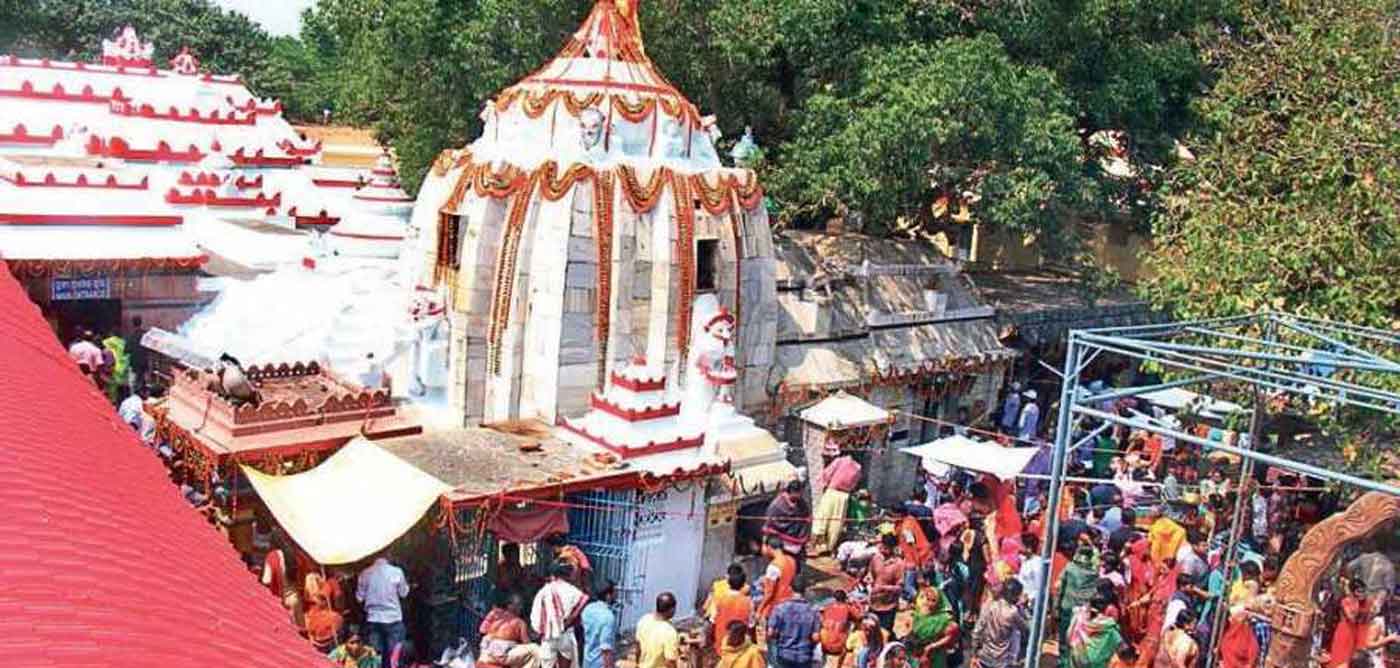
Puri Lokanatha Temple is a Hindu Temple situated in the town of Puri, Odisha, India. It is dedicated to Lord Shiva.The temple of Shri Lokanatha is situated at a distance of about 2½ kms to the west of Lord Jagannatha temple of Puri. This temple is one of the most important Shaiva shrines of Odisha. As per local people this temple was established by Lord Ramacandra. From the architectural point of view the temple is not so important but from the religious point of view, it occupies an important position in the cultural history of Odisha. The legend says that Lord Rama on his way to Sri Lanka for searching Sita reached Puri and sat with a vow to see Siva here. At that time there was a village (koown as Sabarapalli in local language) nearby. Sabaras (native of that village) presented him a Lau or Lauka (Pumpkin, one type of vegetable) looking like a Siva Linga, Lord Rama installed that as the replica of Siva Linga at that place and prayed Siva to fulfill his desire. From that day this Siva Linga was called 'Laukanatha'. It is believed that the word Lokanatha is a later innovation from the original word 'Laukanatha'.
According to history the lingam in this temple was established by Lord Rama. The unique feature is that the Shivalinga is always under water which substantiates the legend that Goddess Ganga flows through the top of the shivalinga as a stream. The festival that is celebrated with great fervor and pomp is the Saranti Somavar Fair while devotees believe that the shivalinga has powers to cure diseases after seeking the darshan of Lord Shiva. The utsava murti of Lokanatha is kept inside the Jagannath temple, Puri. He is the guardian deity of all the treasures and jewellery of Lord Jagannath. This temple is one of the five famous Shiva temple of Puri. Others are Markandeswara Temple, Jambeswar Temple, Banambara Temple and Kapalamochana Temple.
The innermost chamber of the main temple preserves a Shiva linga which is the presiding deity of the temple. This linga is visible to the devotees once in every year. The sanctum including the linga is filled with water throughout the year by a natural fountain. In the night of Pankoddhar Ekadashi (3 days before the famous Shivaratri festival) all the water is bailed out and the Shiva Linga becomes visible and thousands of devotees enable to worship the Lord. According to a local tradition, people who suffer from incurable diseases come here for prayer. The flowers, sandal paste, milk, Curd (yoghurt), honey, beetle leaves, Coconut water, bilva leaves, etc. offered to the God throughout the year remain decomposed in the water creating a special smell and taste being medicated as a whole. people take it as Prasad, in order to be cured from the disese that they suffered for.
The Lokanatha temple has four parts such as Vimana (Main Temple), Jagamohana (Entrance Hall), Natamandapa (Dancing Hall) and Bhogamndapa (Offering Hall). This temple is built in sand stones. The main temple is about 30 feet from the ground level. Most portions of the main temple have been covered with marbles, so the detail architectural features of the main temple are not visible. The outer walls of the main temple housed images of different Deities. The image of Shiva-Parbati is carved on the northern side wall. There is image of Lord Kartikeya on the eastern side wall. The image of four handed Lord Ganesha is carved on the southern side wall. All these side wall images are housed inside small temples. Many small temples are there inside the premises of Lokanatha temple. There is a small temple to the left of the inner courtyard which preserves images of Surya-Narayana and Candra-Narayana. The Satya-Narayan temple within the premises preserves images of Vishnu, Laksmi and several brass idols. On the right side of the entrance to the inner courtyard you will find a figure of Lord Hanuman. The compound of the Lokanatha temple is about 10 feet below the road level. When you enter the lokanatha temple compound by climbing down the stairs from the main road, you will find a big pond (known as Parvati Sagara in local language) at your right side. Devotees wash their hands and feets in this pond before entering into the temple. This pond houses a lot of fishes. Devotees enjoying a lot by offering foods to these fishes.
Lord Lokanatha's representative image is in the Sri Jagannatha temple, known as Bhandara Lokanatha. He is the guardian deity of the Ratnabhandara (treasure house) of Sri Jagannatha temple. Lokanatha is associated with Lord Jagannath in several festivals like Sivaratri, Candan Yatra and Sital Sasthi. The festival of Shivaratri is observed in the temple of Lokanatha with great devotion. A meeting of Hari and Hara (Siva and Vishnu) takes place on the day. On the Mahashivaratri lot of devotees arrive near the temple to offer their prayer to Lord Lokanatha with great devotion.